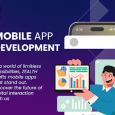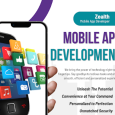Breaking Down the App Development Process: How Long Does it Take to Develop a Mobile App?
In today’s world, mobile applications have become a vital component for businesses, regardless of their scale. From improving customer engagement to streamlining operations, mobile apps offer a range of benefits. However, one question that comes up frequently is: how long does it take to develop a mobile app? The answer to this question is not straightforward, as there are many factors that can affect the timeline of app development. In this blog post, we’ll discuss the various stages of app development and provide a rough estimate of the time required for each stage.
Stage 1: Planning
Before you begin developing your mobile app, it’s important to have a solid plan in place. The planning stage is where you define the purpose of the app, its target audience, features, and functionalities. This stage typically involves market research, competitor analysis, and user persona development. The planning stage may take anywhere from a few weeks to a month or more, depending on the complexity of the app and the amount of research required.
During the planning stage, it’s also essential to consider the platform on which you want to develop your app. You have the option to create applications for iOS, Android, or both platforms. Developing for both platforms will increase the development time and cost, but it will also increase the app’s reach.
Stage 2: Design
Once the planning stage is complete, the next step is the design stage. The design stage involves creating wireframes, user interface designs, and user experience design. This stage is critical as it sets the tone for the entire app. A well-designed app can help improve user engagement and increase retention rates.
The design stage typically takes around 2 to 4 weeks, depending on the complexity of the app and the amount of design work required. During this stage, it’s essential to ensure that the app’s design is consistent with your brand and provides a seamless user experience.
Stage 3: Development
The actual work begins during the development phase. This stage involves coding the app’s functionality, integrating APIs, and implementing the design. The development stage is the longest stage of app development and typically takes around 2 to 6 months, depending on the complexity of the app and the number of features to be implemented.
During the development stage, it’s important to ensure that the app’s code is well-organized and follows industry best practices. This will help ensure that the app is scalable and maintainable over the long term.
Stage 4: Testing
Once the development stage is complete, the app goes through a rigorous testing process to ensure that it functions as intended. This stage involves testing the app for bugs, performance issues, and user experience. The testing stage typically takes around 2 to 4 weeks, depending on the complexity of the app and the number of features to be tested.
During the testing stage, it’s important to involve real users in the testing process. This will help you identify any usability issues and ensure that the app meets the needs of your target audience.
Stage 5: Deployment
Once the testing stage is complete, the app is ready for deployment. This stage involves submitting the app to the app store and making it available for download. The time required for this stage depends on the app store’s review process and may take anywhere from 1 to 4 weeks.
During the deployment stage, it’s important to ensure that the app’s metadata, screenshots, and description are optimized for the app store. This will help improve the app’s visibility and increase downloads.
Stage 6: Maintenance
After the app is deployed, it requires ongoing maintenance to ensure that it functions correctly and remains up-to-date. This stage involves fixing bugs, updating features, and releasing new versions of the app. The time required for this stage depends on the app’s complexity and the frequency of updates required. The maintenance stage is an ongoing process and can last for several years, depending on the app’s lifespan.
During the maintenance stage, it’s important to monitor user feedback and reviews to identify any issues with the app. This will help you prioritize bug fixes and feature updates based on user needs. It’s also important to ensure that the app is updated regularly to stay compatible with new operating systems and devices.
Conclusion
In conclusion, the time required to develop a mobile app varies depending on the complexity of the app and the amount of research, design, and development work required. The planning stage typically takes a few weeks to a month, the design stage takes around 2 to 4 weeks, the development stage takes around 2 to 6 months, the testing stage takes around 2 to 4 weeks, and the deployment stage takes 1 to 4 weeks. The maintenance stage is an ongoing process that can last for several years.
It’s important to ensure that each stage of the app development process is given the necessary time and attention to ensure that the app is well-designed, functions correctly, and meets the needs of your target audience. By following industry best practices and working with experienced app developers, you can ensure that your app is developed efficiently and effectively.
If you’re interested in developing a mobile app for your business, it’s essential to work with a reputable app development company that can guide you through the process and ensure that your app meets your business needs. With the right planning, design, and development, your mobile app can be an invaluable tool for engaging with customers, increasing brand awareness, and improving operational efficiency.



